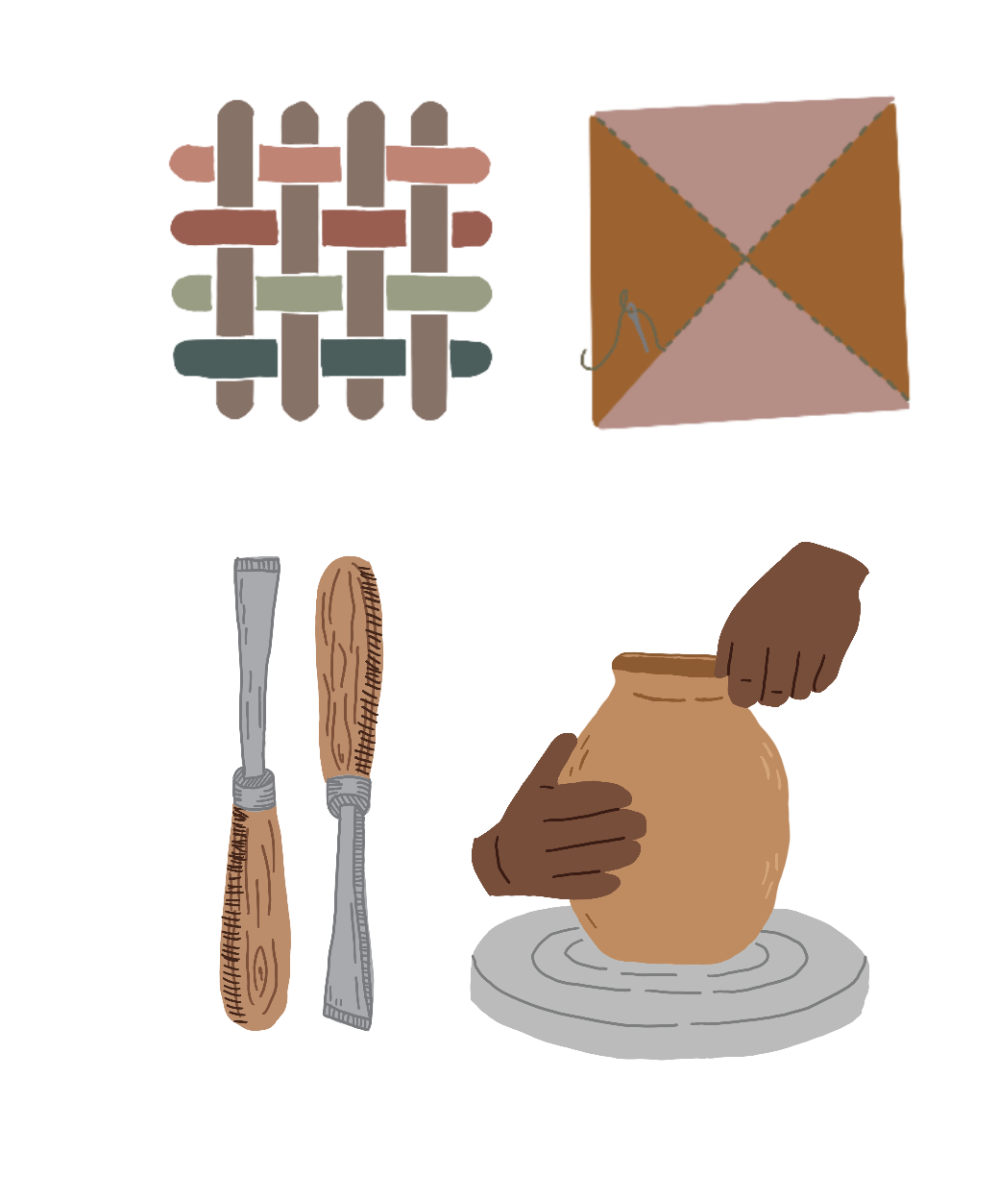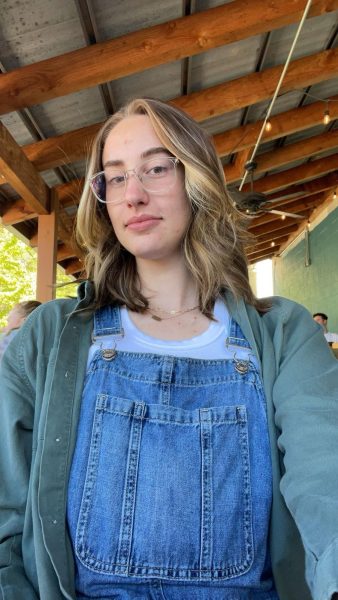Appalachia’s natural beauty and resources have inspired a diverse range of artistic expressions throughout history. Generations of Appalachians have passed down traditional crafts such as woodworking, looming, quilting and pottery, each invigorating the craft’s unique flair.
According to The Blue Ridge Mountains Travel Guide, the foundation of Appalachian folk art is Native American influences that arrived in the region about 16,000 years ago. The arts and crafts of the Appalachian region have been a part of the culture of the people long before the area was recognized as the Appalachian Mountains, or a distinct cultural region.
President of Appalachian Craft Center Jackie Craig said there are many crafts that one can do at home. Among all of them are items that were necessary for the Appalachian people to sustain their lifestyle.
“The most important crafts were textiles and many homes had looms where the women of the house would weave cloth for clothing, bedding and quilts,” Craig wrote. “Presently, looms are commercially available to do at home.”
Stacey Lane, manager of community collaboration at Penland School of Craft, said Appalachian crafts contribute to the generational bond between families and communities.
“I think it is exciting for young people to connect with a process that their parents, grandparents or family farther back participated in,” Lane said.
Appalachian crafts are about crafting what is not needed anymore.
“People were very resourceful back then; it’s about not throwing away things that can still have life in them,” Lane said.
Originating from various Indigenous Tribes across the U.S., “Corn Husk Dolls are really simple to make, but fun and satisfying,” said Lane. She was able to make one in just 10 minutes and bought the corn husks from the grocery store.
Quilting is a craft that was once imperative for Appalachian dwellings. Quilting societies abound in Appalachia consisted of women and men who gathered the necessary materials, decided on a pattern, cut the material, and spent hours at quilting bees, Craig wrote. Today, all that’s needed is a desired pattern, fabric and a quick sewing tutorial.
Pottery, like most other Appalachian crafts, was fundamental for homesteads. Craig said pottery is her favorite traditional craft and “there is hardly any craft more satisfying than sitting at the wheel and watching your own creation grow under your own hands.”
In Boone, there are many places to learn and create pottery. App State has a large pottery program alongside community centered studios in Boone, such as High Country Clay.
Among the crucial crafts for Appalachian homesteads is wood carving. While this craft is still widely popular, it requires more careful expertise.
“The carvers, young through old, would carve things necessary for the home, i.e., ladles, spoons, clothes hooks,” Craig wrote. “And often elaborate furniture including tables, chairs and even coffins.”
Two crafts became essential to the early Appalachian people: blacksmithing and the wheel wright. These craftsmen were very advanced in the early years.
“Although the men of the house/neighborhood might construct wagons from their gathered timbers, a wheel wright was an advanced craftsman and there are few left,” Craig wrote.
Blacksmiths were also advanced craftsmen, providing shoes for the horses, and axes for the woodsmen, Craig wrote. Smaller items were also crafted for the home, usually related to cooking over an open fire: kettles, pots, swing arms to hang pots over the fire and even bed warmers, which were often very decorative.
Although large amounts of traditional Appalachian crafts were vital for survival, there were plenty of others created for the enjoyment of Indigenous tribes and early settlers.
“There were many toys and games made to entertain children, as well as musical instruments to aid in the singing of hymns and songs and ballads from Ireland and Scotland,” Craig wrote. “A popular instrument that found a welcome home here was the banjo, a native of Africa.”
Presently, the arts and crafts of Appalachia continue to thrive, with artisans and artists producing unique and high-quality works that reflect the region’s history, culture and natural beauty.
“Almost every town in western North Carolina, small to large, has at least one store merchandising Appalachian-made crafts,” Craig wrote.
There are various places around Boone that allow visitors to get immersed into high country art. Hands Gallery, located on West King Street in Boone, showcases local fine art and craft. The Blowing Rock Art and History Museum is a local outlet for Appalachian, specifically High Country, cultural embellishments.
According to the Blowing Rock Art and History Museum website adult art classes and guest speakers are offered throughout the year. The museum is free to the public and promotes “the Arts and Southern Appalachian Heritage & History through educational programs, exhibitions, activities, and permanent collections.”
Lane said it is important to sustain the artistic traditions of Appalachia.
“Keeping traditions alive consist of having places that offer workshops, and encouraging art in the schools,” Lane said.
There are various places where traditional crafts are professionally displayed. The Qualla arts and crafts mutual in Cherokee is a source of information regarding indigenous Appalachian crafts. One of the largest and oldest for-profit craft stores is Appalachian Craft Center in Asheville. The Southern Highland Craft Guild shop is a non-profit organization on the Blue Ridge Parkway whose artisans are invited members of the guild.
Lane said she appreciates the connection traditional Appalachian crafts provide.
“Each time I learn a new craft I feel very empowered because it connects me to a time where people made what they needed,” Lane said.
Craig said she values the community aspect centered around Appalachian crafts.
“One of the joys of being involved with Appalachian crafts is knowing the craftspeople on a first-name basis,” Craig said. “Some of my dearest friends now are potters, woodworkers, textile people and glass blowers.”








